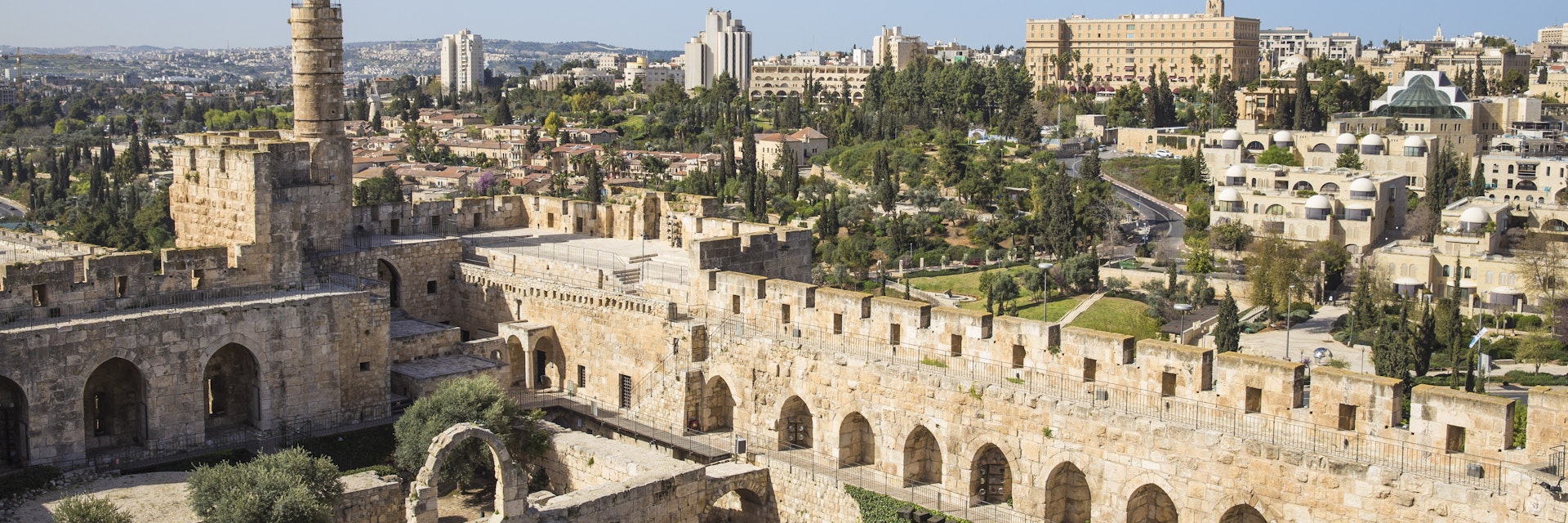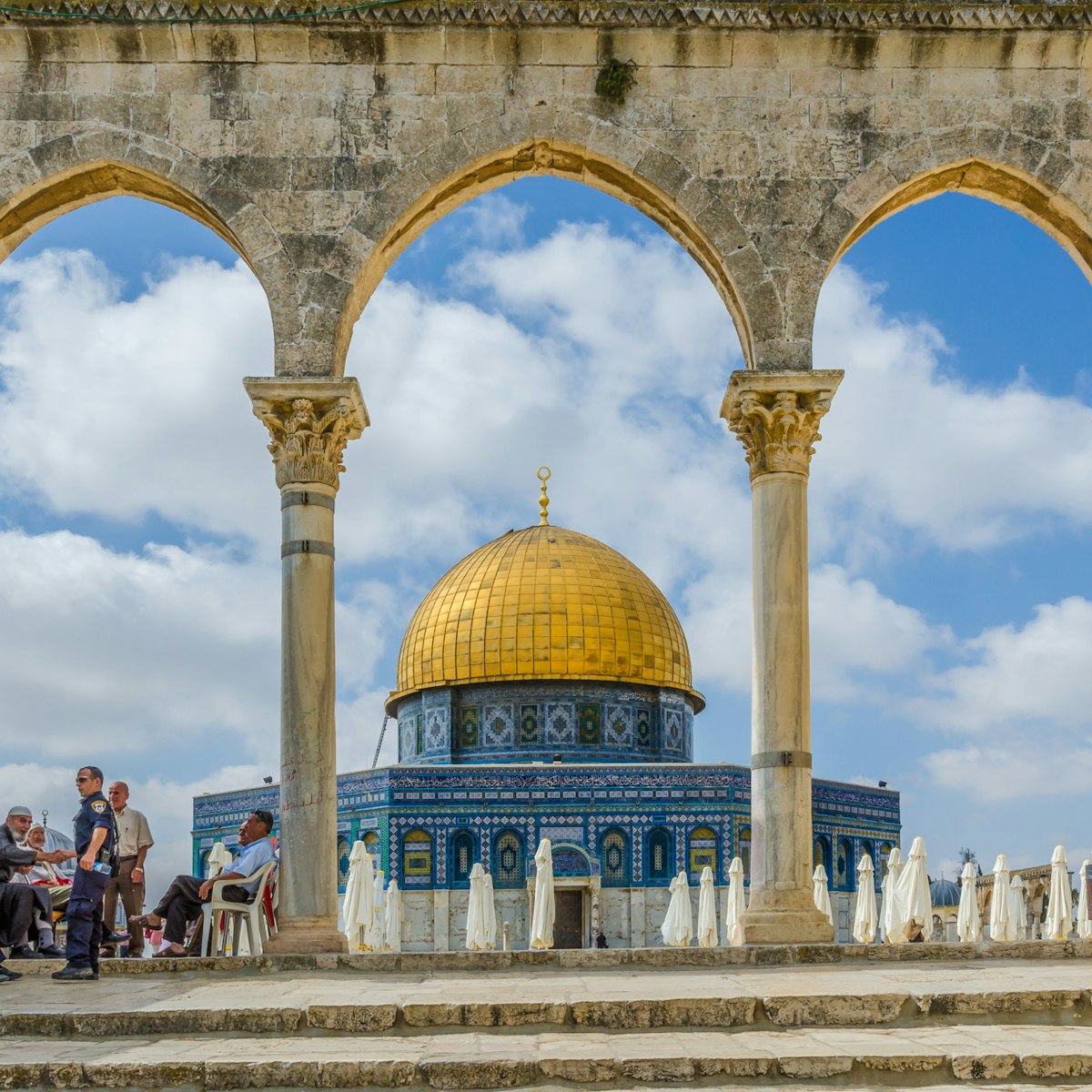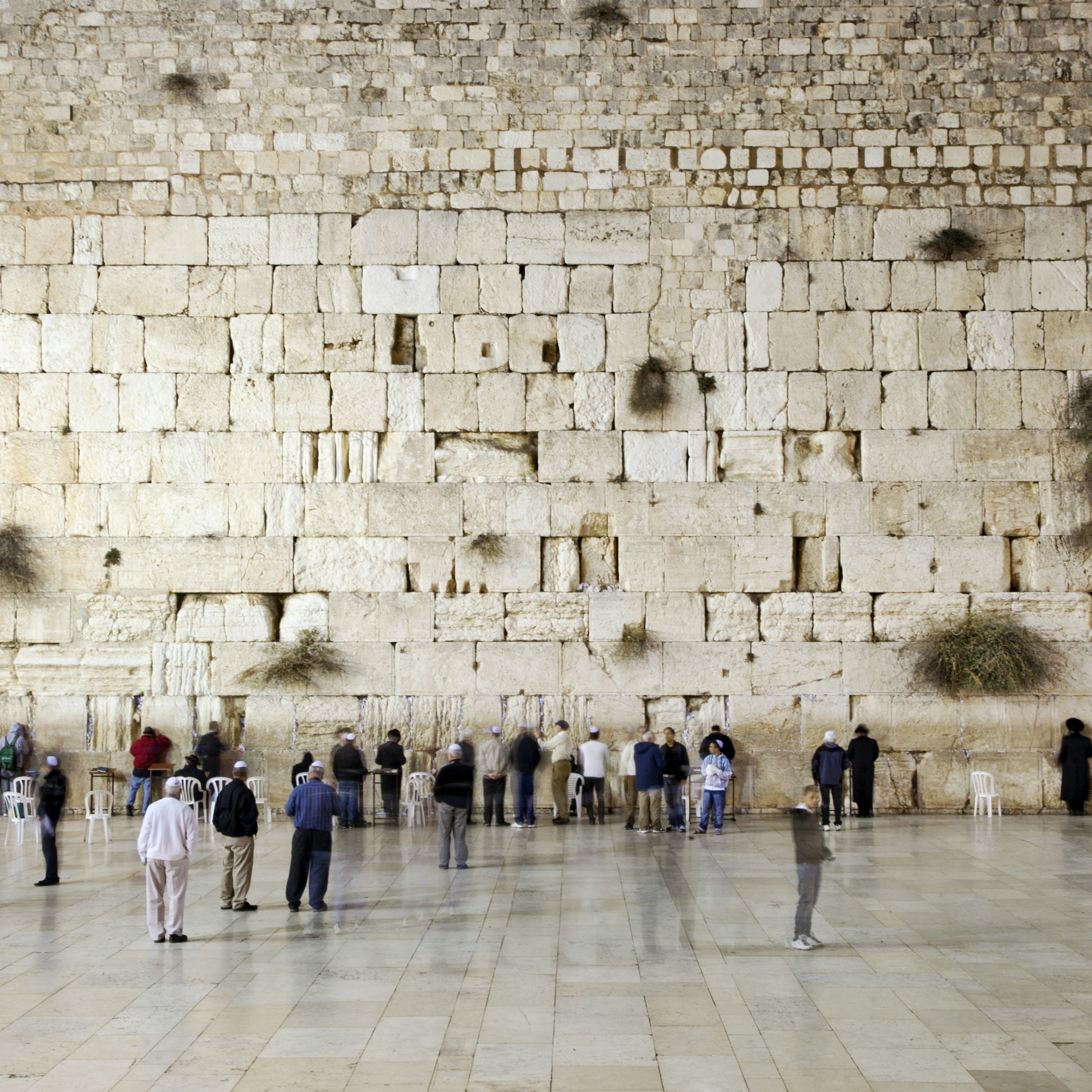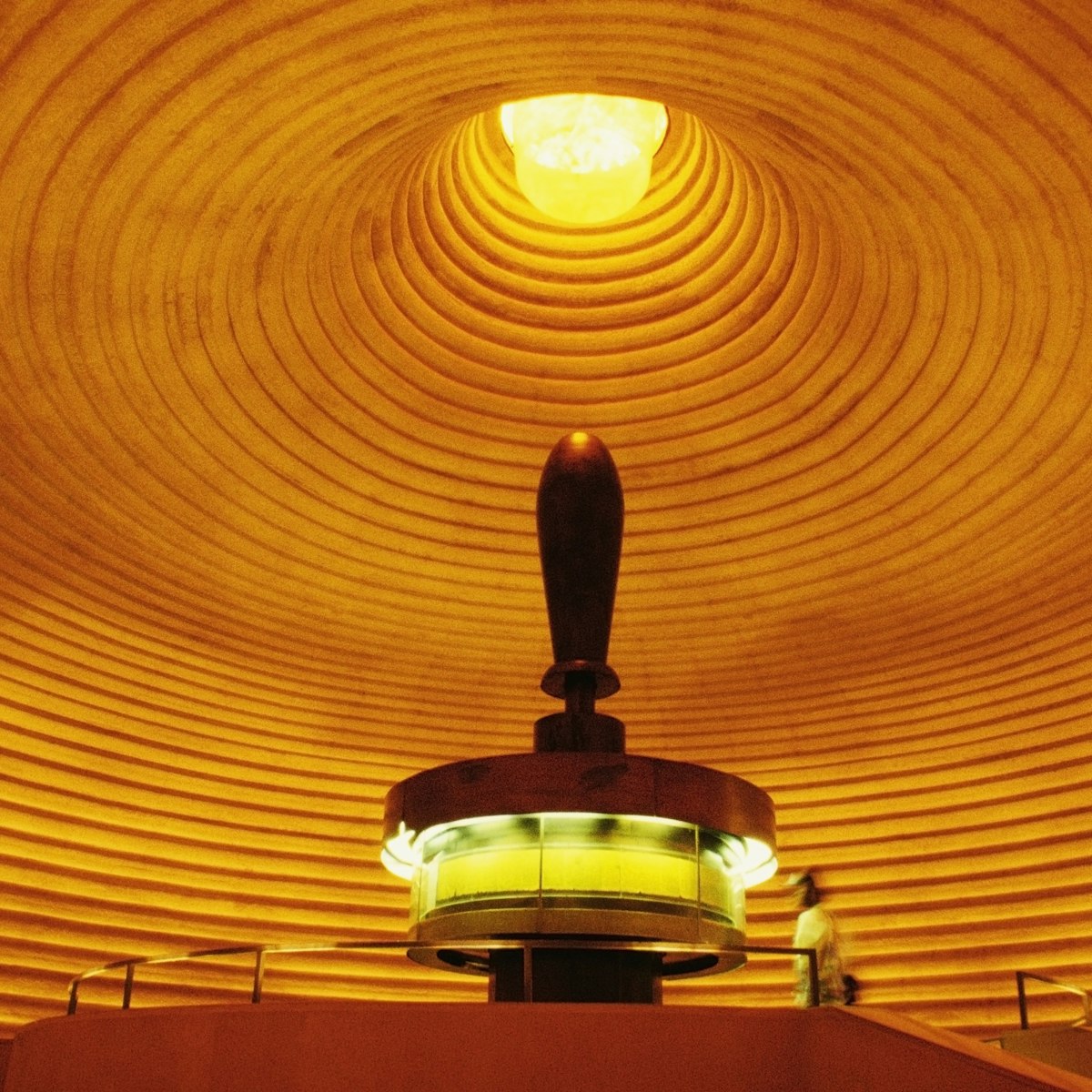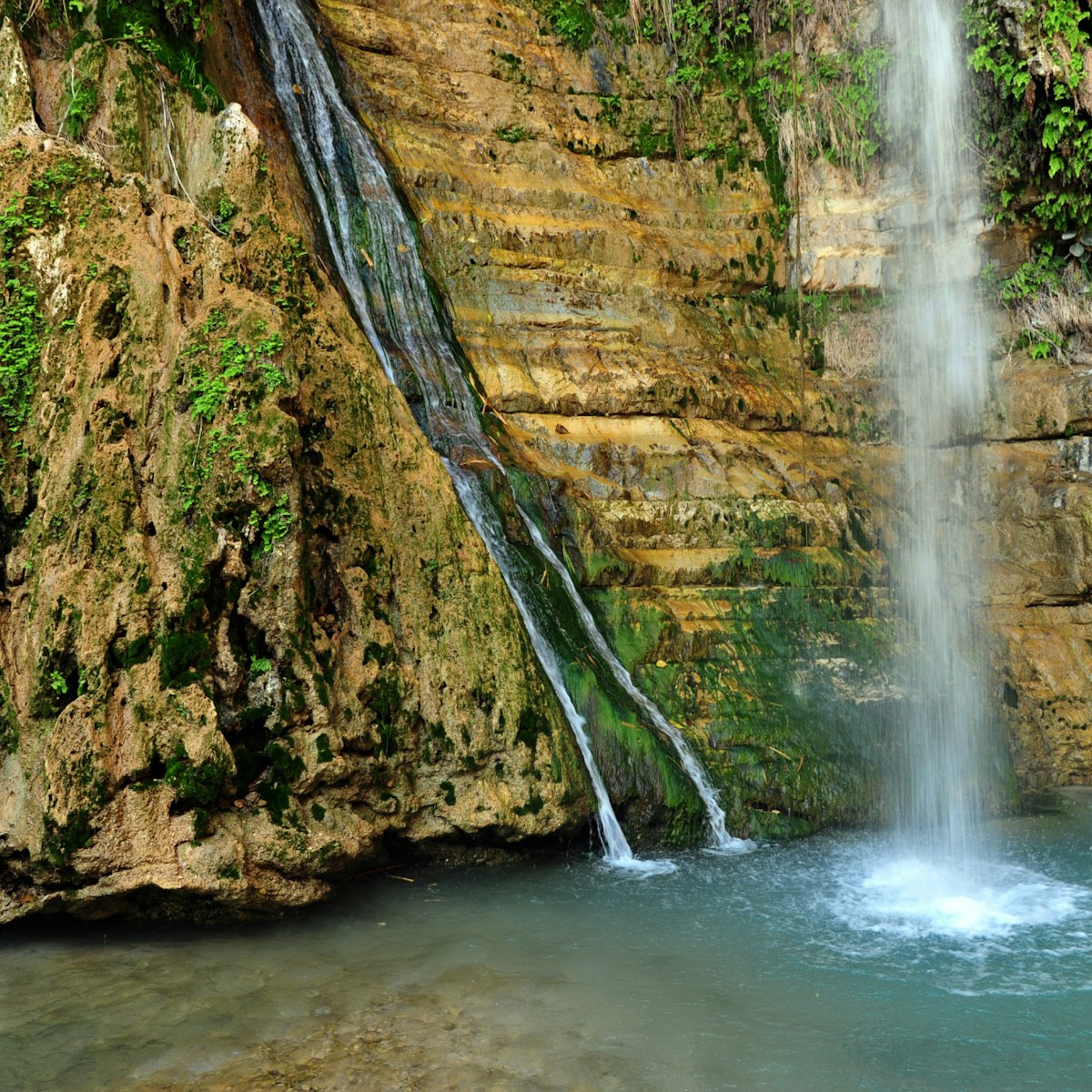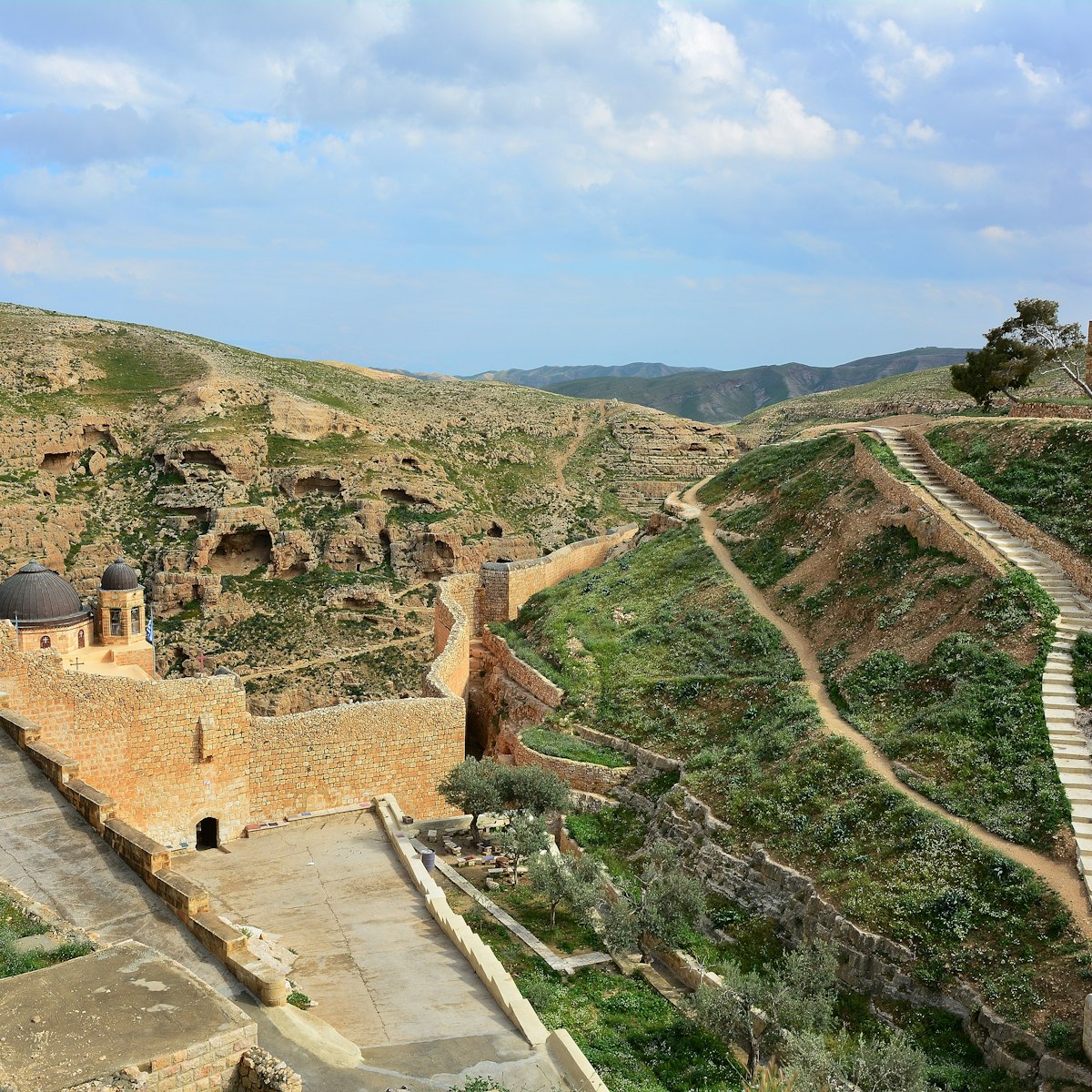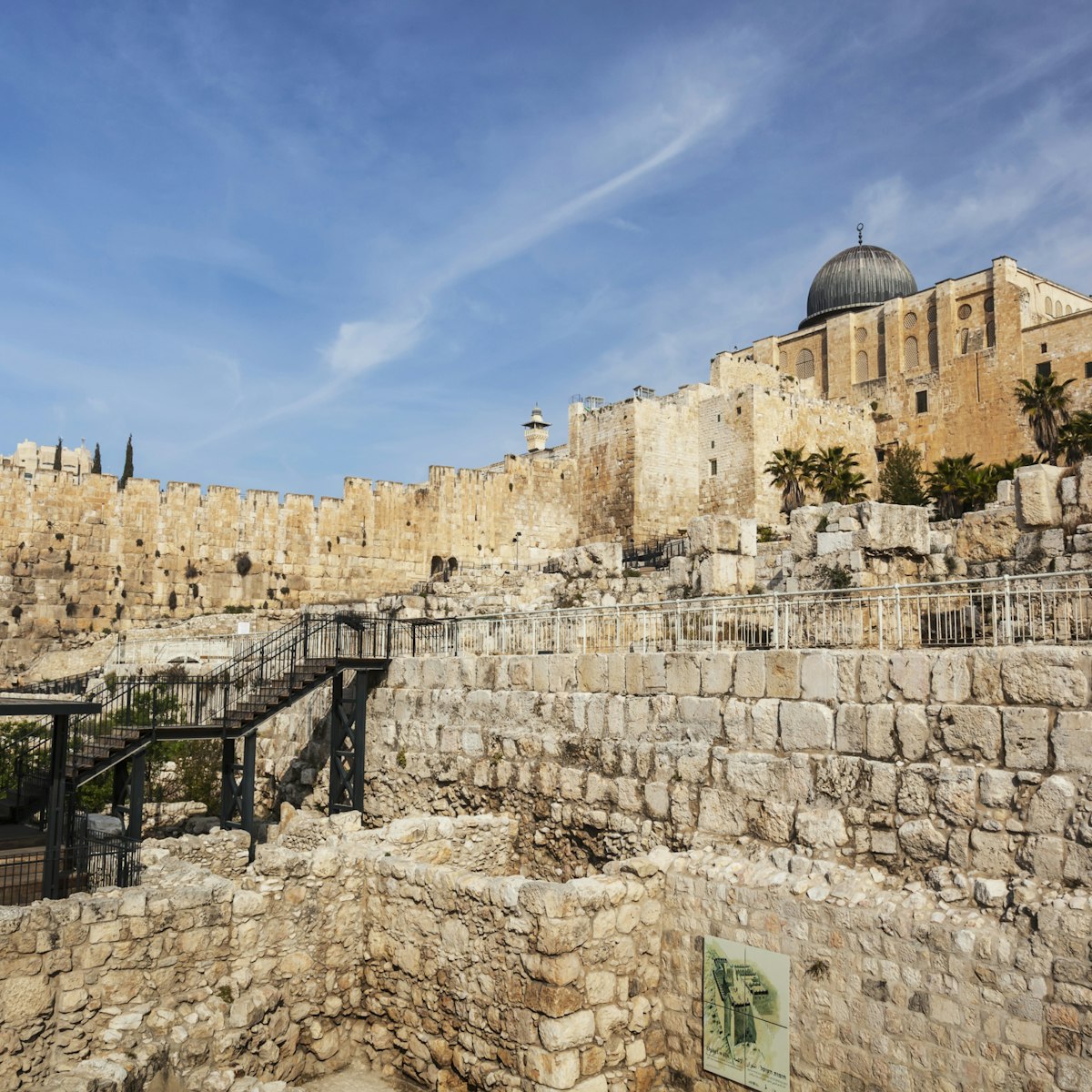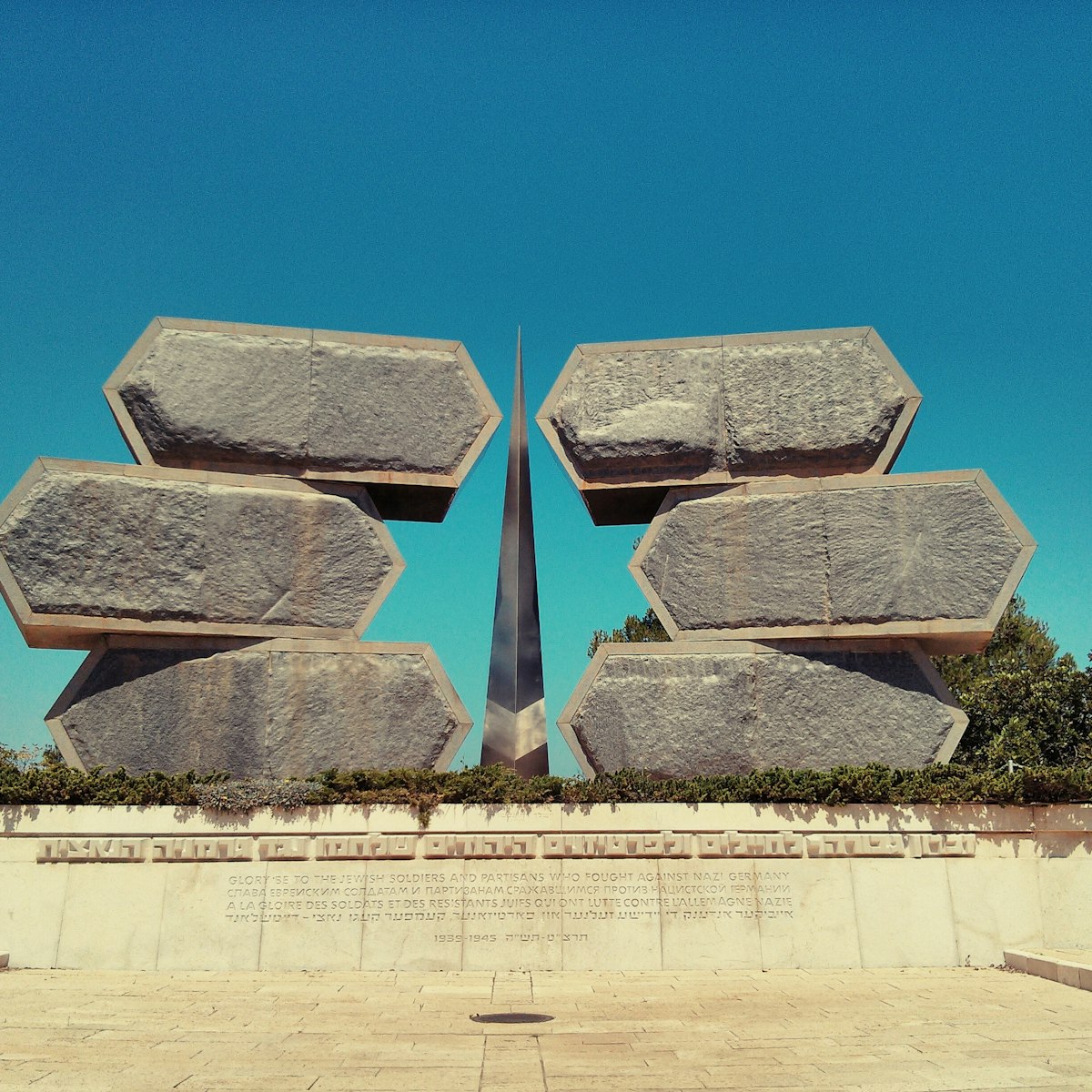First things first: despite being referred to as the 'Tower of David', the citadel dominating views as you enter Jaffa Gate started life as a palace of Herod the Great. Also used by the Romans and Crusaders, the structure was extensively remodelled by the Mamluks and the Ottomans. Today it's home to the impressive Museum of the History of Jerusalem, which tells the city's story in a series of chronologically arranged exhibits starting in the 2nd millennium BCE and finishing in 1948.
A megalomaniacal builder, Herod furnished his palace with three enormous towers, the largest of which was reputedly modelled on the Lighthouse of Alexandria, one of the Seven Wonders of the Ancient World. The chiselled-block remains of one of the lesser towers still serve as the base of the Citadel’s main keep. Following Herod’s death, the palace was used by the Roman procurators, so it's highly possible that this was the location where Pontius Pilate judged Jesus (John 18:28–19:16). The building was largely destroyed by Jewish rebels in 66 CE, and the Byzantines, who came along some 250 years later, mistook the mound of ruins for Mt Zion and presumed that this was David’s palace – hence the name Tower of David. They constructed a new fortress on the site.
As Jerusalem changed hands, so too did possession of the Citadel, passing to the Muslim armies and then to the Crusaders, who added the moat, which was opened to the public only in recent years. It took on much of its present form in 1310 under the Mamluk sultan Malik An Nasir, with Suleiman the Magnificent making further additions between 1531 and 1538. Suleiman is responsible for the gate by which the Citadel is now entered.The Citadel's erroneous association with David continued in the 19th century, when Europeans mistook its Ottoman minaret for David's tower. It was on the Citadel steps that General Allenby accepted the surrender of the city on 9 December 1917, ending 400 years of rule by the Ottoman Turks.
Apropos of a historical sight continually being reinvented, the museum galleries, built in the 1980s, will be thoroughly redesigned over the next five years. More authentic artefacts will be added to the replicas, more multimedia displays, more contemporary technology and thematically, rather than chronologically organised exhibitions will appear.
An entirely new section of the site called the Kishleh, Turkish for 'troop barrack', opened to visitors in 2018. Built by Ismail Pasha, rebel leader and son of the Albanian-Ottoman ruler Ali, it was turned into a jail by the British in 1917 and housed Jewish underground leaders in a series of picturesquely situated cells – you can still see Irgun slogans gratified on the walls. Ironically, it adjoins the functioning Old City Police Station. Two decades ago the museum wanted to use the space for a children's centre, but archaeologists discovered a row of Crusader-era cement bathtubs used to dye cloths below. Years of painstaking excavations followed, revealing the foundation walls to Herod's palace further below; some of the massive stones here have also been dated to 800 BCE and the First Temple period, one of the few remaining portions of King Hezekiah's defensive walls.
The discovery has forced archaeologists to reevaluate their estimation of the size of the city during this era. They uncovered tunnels that once carried water from Sultan's and Gihon spring, aristocrats attempting to escape during the revolt against the Romans in 70 CE, and later, Irgun detainees who tried their luck, to no avail, at finding freedom. Thirty-minute English-language tours are available on Friday mornings by reservation.
Also in 2018, the Tower of David's Innovation Lab also introduced virtual-reality walking tours (three hours, 120NIS) in Hebrew and English (weekly by reservation online). Still a work-in-progress when we visited, plans called for several stops between the Citadel and the Western Wall where you don goggles that give you an expertly-informed 360-degree rendition of what the city looked like thousands of years ago. If you want to tour the lab itself, which is housed in an upper room the Citadel, get in touch via email a few days before you intend to visit.
The citadel offers panoramic views across Jerusalem, as good a primer on the city as the museum exhibits; it's worth visiting when you first arrive in Jerusalem. A useful audio guide (15NIS) is available in seven languages at the museum, or you can download a mobile app from the museum website before you arrive. There's a cafe (open 9am to 4pm Sunday to Thursday, to 2pm Friday) with wi-fi in the garden courtyard.
The popular Night Spectacular (adult/child 55/45NIS), a 45-minute sound-and-light show about the history of Jerusalem, is staged in the Citadel's internal courtyard and cloaks the ancient stone in vivid projections (James Bond fans might flash on the Giza pyramid scene from The Spy Who Loved Me). The new King David show, an impressionistic animated music video-like show of the biblical figure, was inaugurated in 2018. Each show takes place once per night, five nights per week; start times are dependent on the sunset. See the website for details. Reservations recommended at least a day in advance.
In the summer, artists stage temporary exhibitions outdoors amid the ruins; in 2018, an Armenian-Dutch artist used only paper to create life-size sculptures of important historical figures. Activities for children are organised to complement the theme of the works.
The Night Spectacular and nearly three-quarters of the museum is accessible to visitors with disabilities.
